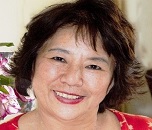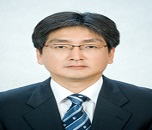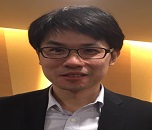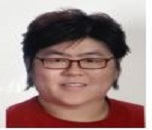Day 2 :
Keynote Forum
kazuko Tatsumura
Gaia Holistic Health, USA
Keynote: Onnetsu-Invisible Oncology
Time : 10:00-10:45

Biography:
Kazuko Tatsumura has graduated from Toho Academy of Music in Tokyo, as a Pianist and Composer, invited by the Boston Symphony; she came to the USA in 1961 as one of the first Japanese women. She has then received Master of Art from New York University and obtained her PhD in Philosophy in 1965. In 1967, she turned to an independent career and became the top International Classical and Cultural Impresario/Producer. Until 1992, she produced an average of 2,000 cultural events each year, traveling to more than 140 countries. She was presented with numerous honors for her work. She studied Oriental Traditional Medicine of Japan, Korea, Taiwan and China. In 2000, she received her PhD and OMD from the International Academy of Education in Tokyo. She has established the Oki-Do Holistic Health Center in 1994 in NY and in 2001 the GAIA Holistic Center at the wake of 9/11 tragedy, for body mind and spirit, aiming for the non-invasive natural healing methods based on the wisdom of the East. She has written numerous articles and several books to her credit.
Abstract:
Onnetsu means comfortable heat. Dr. Kazuko Onnetsu Therapy invented by Dr. Kazuko Tatsumura Hillyer emits from a special ceramic; Precise 8-10 μ of vibration of Infrared Sun Ray; vibration of terahertz; and various degrees of heat. When Onnetsuki is slid over the skin, healthy areas are comfortable, but IF deep tissue is cold, unhealthy or degenerated, hot spot is detected by the temperature sensation reported from the patient. Dr. Kazuko Onnetsu Therapy is both a diagnostic and therapeutic. When this hot spot is effectively treated with Far-Infrared, Terahertz and Heat, Dr. Kazuko Onnetsu Therapy, the hot sensation subsides and the disease conditions improve. Dr. Kazuko’s protocol must be followed. Dr. Kazuko Onnetsu Therapy is based on four historical and scientific facts: (1) NASA's finding regarding Far-Infrared vibration from sun light 8-10 μ only. Also, added is the specific terahertz vibration: Healing vibration. (2) Traditional Japanese concept of the significance of body temperature; raising cold temperature. (3) Immunology theory by Dr. Toru Abo, balancing autonomic nervous system to improve condition of white cells; raising immunity. (4) Promoting four flows of energy through acupuncture technique: Blood, body fluid, oxygen, Ki(Chi). Dr. Kazuko has taught her Onnetsu Therapy to MDs and health practitioners over the past decades all over the world are practicing it in the hospitals and clinics. Clinical trials have shown improvements on cases (including but not limited to) as arthritis, asthma, various cancers, diabetes, tuberculosis and various painful conditions.
- Posters
Session Introduction
Mei-Ren Pan
Kaohsiung Medical University, Taiwan
Title: The Histone Methyltransferase G9a as a Therapeutic Target in Colorectal Cancer

Biography:
Mei-Ren Pan has completed her PhD from Kaohsiung Medical University, Taiwan. She is currently the Assistant Professor at Graduate Institute of Clinical Medicine, Kaohsiung Medical University.
Abstract:
Neo-adjuvant Concurrent Chemo-Radiotherapy (CCRT) is a standard treatment of locally advanced Colon Cancer Cell (CRC). In order to maximize efficacy and minimize toxicity, new drugs have been developed and used in combination with CCRT. Recently, it has been shown that G9a plays a role in mediating phenotypes of Cancer Stem Cells (CSCs). This study aimed to characterize G9a as a biomarker in predicting therapy response to prevent overtreatment and adverse effects in CRC patients. The primary tumors from 39 patients who received CCRT for rectal cancer were selected. In vivo tumor xenograft models for tumorigenic properties in immune-deficient mice were developed. In vitro stemness ability was performed by tumor-sphere assays, cell response to anticancer agents and stemness-related genes analysis. Cells survived from radiation treatment and displayed high levels of G9a. A significantly positive correlation was shown between G9a and CSCs marker CD133 in locally advanced rectal cancer patients with CCRT. Knockdown of G9a increased the sensitivity of cells to radiation treatment and sensitized cells to DNA damage agents through PP2A-RPA axis. Taken together, our study theorized that G9a might serve as a novel target in colon cancer, which offers exciting potential in prediction of response to preoperative chemo-radiotherapy in patients with advanced CRC.
Yun Seong Kim
Pusan National University School of Medicine, South Korea
Title: Texture Analysis Predicting EGFR Mutation and Recurrence in Lung Adenocarcinoma

Biography:
Yun Seong Kim has completed his PhD from Pusan National University and Postdoctoral studies from University of Massachusetts, USA. He is the Director of Pulmonology and Critical Care Medicine in Pusan National Yangsan Hospital. He has published more than 30 papers in reputed journals.
Abstract:
Objectives: We aimed to investigate the discriminative value of texture feature in EGFR mutation of lung adenocarcinoma and prognostic value of texture features using 18Fluorine-Fluorodeoxyglucose (18F-FDG) Positron Emission Tomography/Computed Tomography (PET/CT).
Methods: 63 lung adenocarcinoma patients with preoperative 18F-FDG PET/CT between January 2010 and December 2014 were included. Texture features are extracted automatically by using LIFEx software (University of Paris-Saclay, France), which provided texture features of gray level co-occurrence matrix, neighborhood gray-level different matrix, gray-level run length matrix and gray-level zone length matrix.
Results: Contrast (p=0.0179), dissimilarity (p=0.024), entropy (p=0.0097), HGRE (p=0.0093), HGZE (p=0.0044), LRHGE (p=0.0076), RLNU (p=0.0249), SRHGE (p=0.0105), SZHGE (p=0.014), ZLNU (p=0.011), SUVmax (p=0.0087), SUVmean (p=0.0084), SUVpeak (p=0.0105), TLG (p=0.0138) were lower in adenocarcinoma with mutant EGFR, while energy (p=0.102), homogeneity (p=0.0318), LGRE (p=0.0079), LGZE (p=0.0055), LRLGE (p=0.0084), LZLGE (p=0.037), SRLGE (p=0.0059), SZLGE (p=0.0417) were higher in adenocarcinoma of mutant EGFR. Entropy (odd ratio 0.2548, 95% CI 0.09-0.7209, p=0.01) was the independent predictor of EGFR mutation. In addition, LRHGE (hazard ratio 1.0017, 95% CI 1.0008-1.0026, p=0.0002) predicted the recurrence in lung adenocarcinoma.
Conclusion: Texture features predicted EGFR mutation in lung adenocarcinoma. In addition, LRHGE was an independent predictor of recurrence in patients with lung adenocarcinoma.
Chi-Wen Luo
Kaohsiung Chang Gung Memorial Hospital, Kaohsiung, Taiwan
Title: Effects of fluid shear stress on the malignant characteristics and drug sensitivity of breast cancer

Biography:
Chi-Wen Luo has completed his PhD from Tamkang University, Taipei, Taiwan and Postdoctoral studies from National Institute of Cancer Research, National Health Research Institutes, Taiwan. He has been the Assistant Principal Investigator in Department of Pathology, Kaohsiung Medical University Hospital, Kaohsiung, Taiwan. He has published more than 20 papers in reputed journals.
Abstract:
Introduction & Aim: Recent studies have indicated that the dynamic stresses created by interstitial fluid flow/blood flow play important roles in tissue development, maintenance, function and pathogenesis. Increasing evidences also indicated that dynamic stresses, such as Shear Stress (SS), play roles in tumor cell survival and several malignant characteristics. SS in and around tumor tissue could affect the efficacy of anticancer agent delivery, tumor microenvironment, and metastasis/invasion capacity. In addition, SS also could affect the migration of Circulating Tumor Cells (CTCs) during metastasis. Our previous studies have shown that SS could increase the sensitivity of radiation and induce apoptosis on tumor cell through the inhibition of integrin β1/FAK pathway. Here, we want to clarify whether FAK also plays roles in controlling chemotherapeutic responsibility and regulating the malignant characteristics after SS stimulation in adherent tumor cells and CTCs.
Materials & Methods: Breast cancer cells (MDA-MB-231, MDA-MB-468 and MCF-7) were used in this study. Cells were seeded onto glass slides pre-coated with fibronectin or in suspension, and then subjected to 0, 1 and 12 dyne/cm2 of laminar shear stress for 0-24 hours. Cells were then collected to study the migration/invasion abilities, drug sensitivity and signaling transduction pathway by other assays.
Results: Our data showed that high shear stress (12 dyne/cm2) might inhibit the migration/invasion abilities of adherent and circulating tumor cells but not in low shear stress (1 dyne/cm2). Low shear stress could induce the Mesenchymal-Endothelial Transition (MET) in CTCs. In addition, high shear stress could also increase the cisplatin sensitivity in both adherent and circulating tumor cells. High shear stress could down-regulates FAK, p-FAK, p-AKT expression through integrin β1. Knockdown of FAK could increase the drug sensitivity and decrease the migration/invasion abilities induced by low shear stress in adherent and circulating tumor cells.
Conclusion: Our results suggest that mechanical forces applied on tumor cells may play important roles in tumor biology and the effects of shear stress could be taken into account in cancer therapy development.
Yu-Chieh Lee
Taipei Medical University Hospital, Taiwan
Title: NRF2 attenuates EMT by regulating the expression of snail in ovarian cancer

Biography:
Yu-Chieh Lee has completed her PhD from Taipei Medical University, Taiwan and Postdoctoral studies from Taipei Medical University Hospital of Gynaecology. She is interested in chemotherapy response biomarker, predictive biomarker chemotherapy and cancer biology.
Abstract:
Epithelial-Mesenchymal Transition (EMT) is a phenotype conversion that plays a critical role in the development of cancer progression. It is known that snail could regulate the progression of EMT. Nuclear factor erythroid 2 related factor 2 (NRF2), a key regulator of antioxidant defense system, protects cells against oxidative stress. We discovered overexpression of NRF2 is poor prognosis in human ovarian cancer patient’s tissue section by tissue microarray. In this study, expression of NRF2 in A2780, TOV-21G, TOV-112D and ES-2 human ovarian cancer cell lines and virus transformed human ovarian cell line A2780 was examined by qPCR and western blot. NRF2 expression was further studied in A2780 and transfection cell lines. By Western blot analysis, the performance of the NRF2 and snail is consistent in shNRF2 of A2780 cell lines. Down-regulation of NRF2 could increase cisplatin sensitivity and decrease cell migration and invasion. Therefore, we suggested NRF2 attenuates EMT by regulating the expression of snail in ovarian cancer.
- Work shop
Session Introduction
kazuko Tatsumura
Gaia Holistic Health, USA
Title: Onnetsu-Invisible Oncology
Time : 13:30-14:30

Biography:
Kazuko Tatsumura has graduated from Toho Academy of Music in Tokyo, as a Pianist and Composer, invited by the Boston Symphony; she came to the USA in 1961 as one of the first Japanese women. She has then received Master of Art from New York University and obtained her PhD in Philosophy in 1965. In 1967, she turned to an independent career and became the top International Classical and Cultural Impresario/Producer. Until 1992, she produced an average of 2,000 cultural events each year, traveling to more than 140 countries. She was presented with numerous honors for her work. She studied Oriental Traditional Medicine of Japan, Korea, Taiwan and China. In 2000, she received her PhD and OMD from the International Academy of Education in Tokyo. She has established the Oki-Do Holistic Health Center in 1994 in NY and in 2001 the GAIA Holistic Center at the wake of 9/11 tragedy, for body mind and spirit, aiming for the non-invasive natural healing methods based on the wisdom of the East. She has written numerous articles and several books to her credit.
Abstract:
Onnetsu means comfortable heat. Dr. Kazuko Onnetsu Therapy invented by Dr. Kazuko Tatsumura Hillyer emits from a special ceramic; Precise 8-10 μ of vibration of Infrared Sun Ray; vibration of terahertz; and various degrees of heat. When Onnetsuki is slid over the skin, healthy areas are comfortable, but IF deep tissue is cold, unhealthy or degenerated, hot spot is detected by the temperature sensation reported from the patient. Dr. Kazuko Onnetsu Therapy is both a diagnostic and therapeutic. When this hot spot is effectively treated with Far-Infrared, Terahertz and Heat, Dr. Kazuko Onnetsu Therapy, the hot sensation subsides and the disease conditions improve. Dr. Kazuko’s protocol must be followed. Dr. Kazuko Onnetsu Therapy is based on four historical and scientific facts: (1) NASA's finding regarding Far-Infrared vibration from sun light 8-10 μ only. Also, added is the specific terahertz vibration: Healing vibration. (2) Traditional Japanese concept of the significance of body temperature; raising cold temperature. (3) Immunology theory by Dr. Toru Abo, balancing autonomic nervous system to improve condition of white cells; raising immunity. (4) Promoting four flows of energy through acupuncture technique: Blood, body fluid, oxygen, Ki(Chi). Dr. Kazuko has taught her Onnetsu Therapy to MDs and health practitioners over the past decades all over the world are practicing it in the hospitals and clinics. Clinical trials have shown improvements on cases (including but not limited to) as arthritis, asthma, various cancers, diabetes, tuberculosis and various painful conditions.
